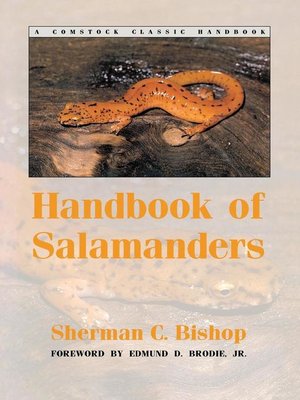Handbook of Salamanders
ebook ∣ The Salamanders of the United States, of Canada, and of Lower California · Comstock Classic Handbooks
By Sherman C. Bishop

Sign up to save your library
With an OverDrive account, you can save your favorite libraries for at-a-glance information about availability. Find out more about OverDrive accounts.
Find this title in Libby, the library reading app by OverDrive.



Search for a digital library with this title
Title found at these libraries:
| Loading... |
Despite their abundance in many parts of North America, salamanders have generally been neglected by all but a few specialists. In this book—first published in 1943—Sherman C. Bishop discusses in a lively but authoritative manner the 126 species and subspecies of salamanders that are known to exist in the United States, Canada, and Baja California.
Group by group, Bishop describes salamanders in accounts that give the common and technical names, type of locality, range, habitat, size, anatomical characteristics, color, breeding habits, and relationships—all in a uniform arrangement that makes the handbook especially convenient for studying both living animals and laboratory specimens. His brief introduction surveys the relationships and general habits of salamanders and gives information on collecting and preserving them. In his foreword, Edmund D. Brodie, Jr., a specialist on salamanders, updates the taxonomy of the group.
|Despite their abundance in many parts of North America, salamanders have generally been neglected by all but a few specialists. In this book—first published in 1943—Sherman C. Bishop discusses in a lively but authoritative manner the 126 species and subspecies of salamanders that are known to exist in the United States, Canada, and Baja California.Group by group, Bishop describes salamanders in accounts that give the common and technical names, type of locality, range, habitat, size, anatomical characteristics, color, breeding habits, and relationships—all in a uniform arrangement that makes the handbook especially convenient for studying both living animals and laboratory specimens. His brief introduction surveys the relationships and general habits of salamanders and gives information on collecting and preserving them. In his foreword to the 1994 reprint edition, Edmund D. Brodie, Jr., a specialist on salamanders, updates the taxonomy of the group.






